The first GS – BMW’s R80 G/S
With Ian Falloon
Every so often a motorcycle appears that creates its own niche in the market, sometimes changing the marketplace forever. While BMW hasn’t produced landmark models in the vein of Triumph’s Speed Twin or Honda’s CB750 four, the BMW R80 G/S was their most unique and ground breaking model.
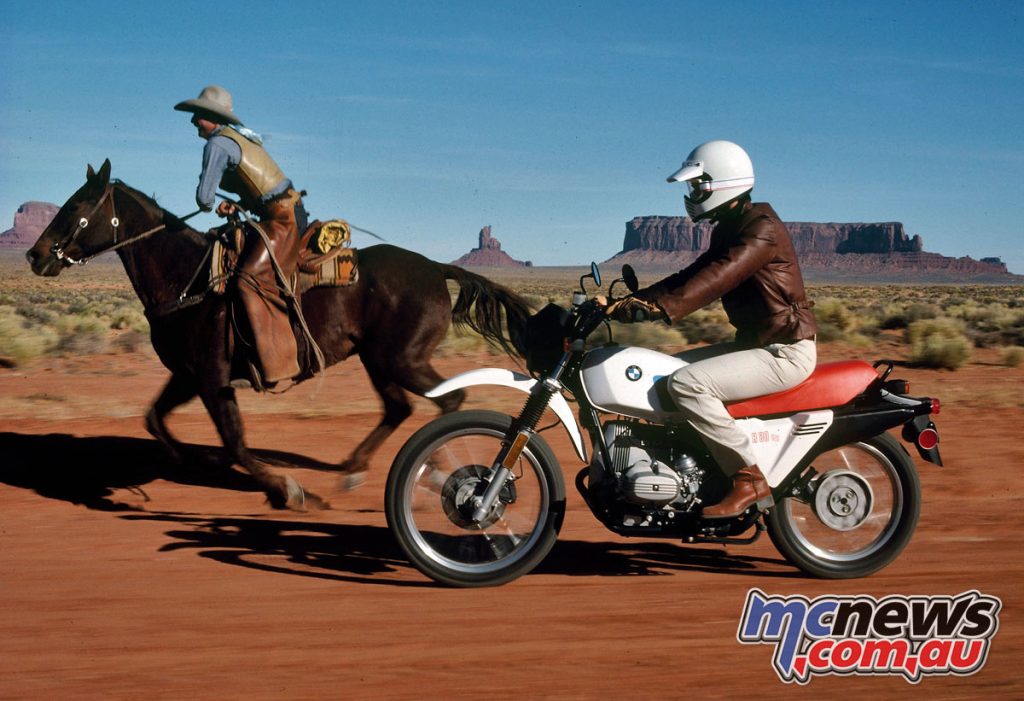
The R80 G/S initiated a new category; that of the larger displacement dual-purpose motorcycle. Over the past forty years BMW’s R80 G/S has evolved into the current R1250 GS adventure motorcycle and spawned dozens of competitors. The R1250 GS is the backbone of BMW’s line-up and the adventure motorcycle is one of the most popular worldwide. And it all began with the R80 G/S.
Back in 1980 the largest dual-purpose motorcycles were 500 cc four-stroke singles, but as these were pigs to start, very tall, and blessed with intolerable vibration their appeal was limited. BMW had a long history of off-road involvement with their boxer twins and rewrote the rules with their R80 G/S.
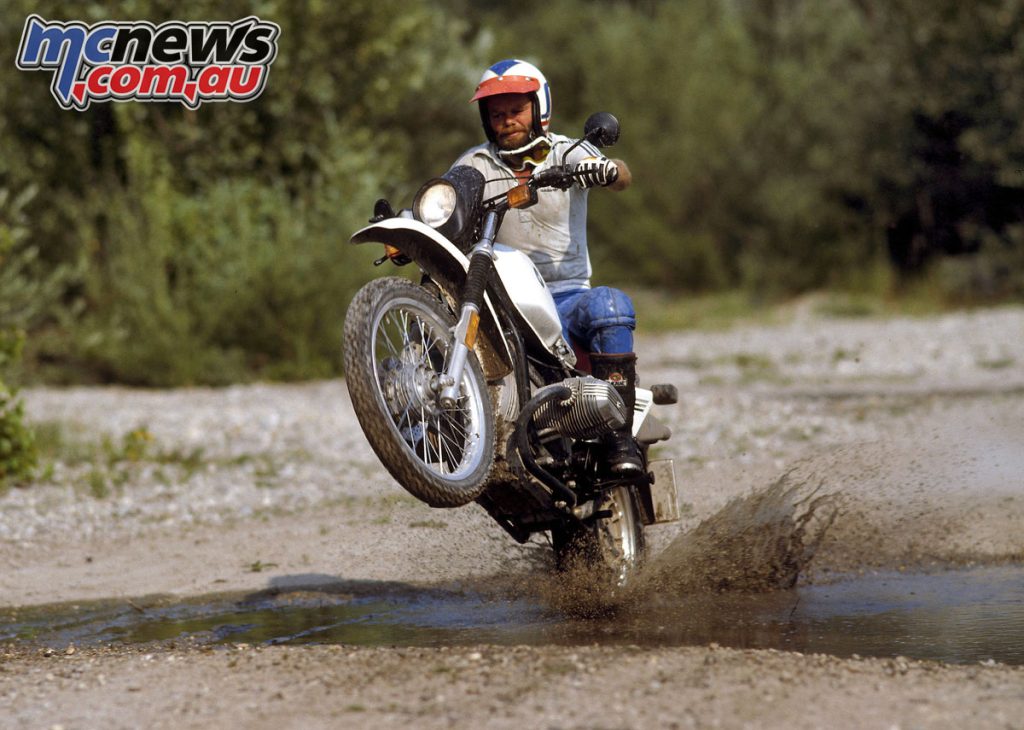
Continuing their usual path of evolutionary development; the R80 G/S took the R80/7 air-cooled boxer engine with the smaller R65 chassis. They then mixed a few individual ingredients and the result was an innovative machine that excelled in its intended role.
G/S stood for Gelände Strasse, or woods/street, and the R80 G/S pioneered a new class of motorcycle; the all-purpose large capacity leisure machine. Aimed at the explorer or adventurer rider, it initiated a path that serves BMW well today.
For a dirt bike the R80 G/S was big and heavy, but for a street motorcycle the weight and size were moderate. BMW figured most riders would use the G/S primarily for street duties and they were right. Owners liked the off-road look without necessarily testing their limits off road.
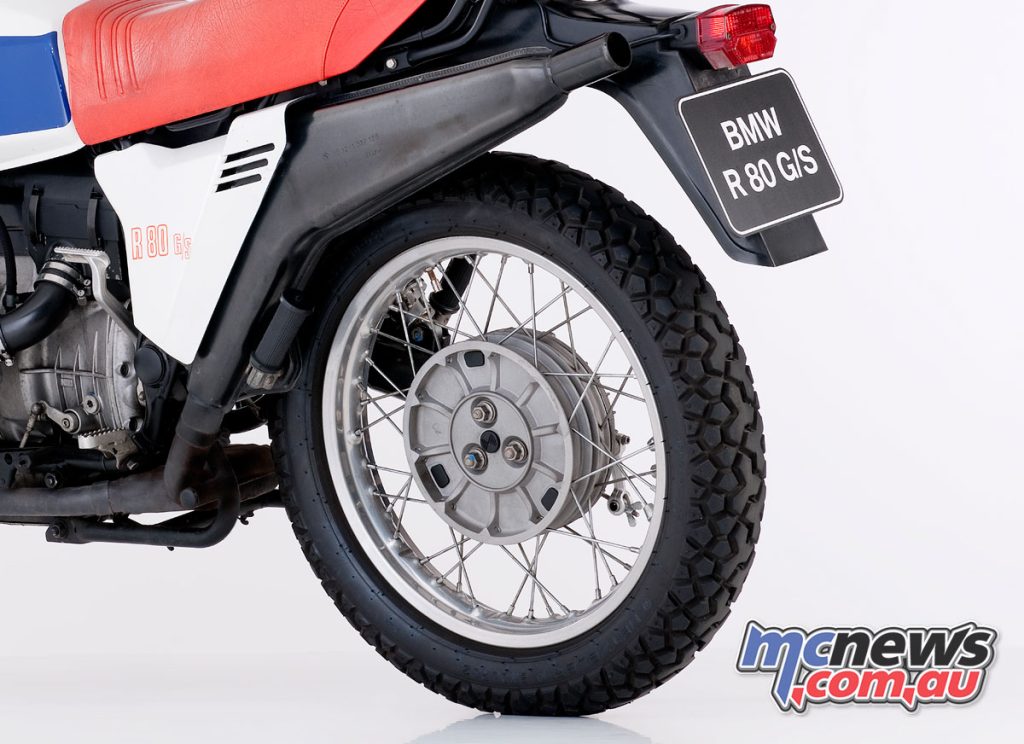
But for the high-rise two-into-one exhaust system, the R80 G/S engine specifications were similar to the R80/7. Developments extended to Nikasil cylinders, Bosch electronic ignition, a 10-pound lighter clutch and flywheel, and a plastic airbox with flat air filter.
The 84.4 x 70.6 mm overhead valve boxer twin displaced 797.5 cc. With a mild 8.2:1 compression ratio and fed by a pair of Bing 32 mm constant velocity carburettors the power was a moderate 50 horsepower (37 kW) at 6,500 rpm.
The frame was similar to the R65, but new was the bolted-on rear subframe, and Monolever single sided swingarm. Also incorporating the driveshaft, the Monolever was claimed to provide 50 per cent greater torsional rigidity, while weighing 2 kg less than the normal double-sided type. Three 12 mm nuts retained the rear wheel automotive style, and the 1.85 x 21-inch front and 2.15 x 18-inch rear wheels were similar to the factory ISDT machines.
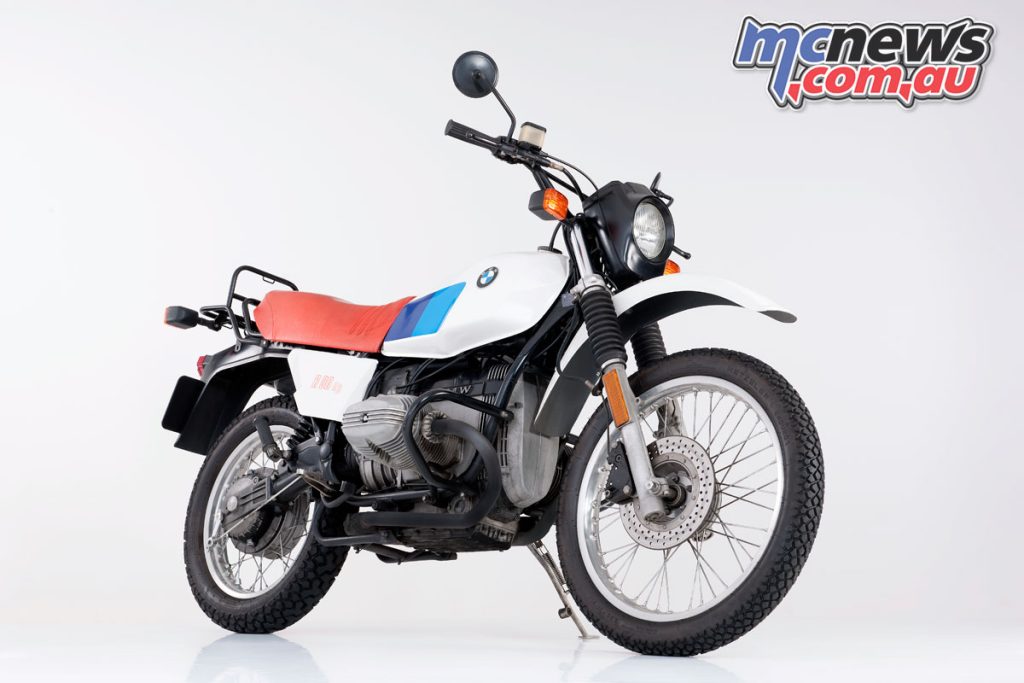
Metzeler developed tyres specifically suitable for a large and powerful dual-purpose motorcycle, these the first universal tires to be rated at speeds up to 170 km/h. The front brake was also unusual for an enduro machine, with a single front disc and Brembo caliper.
Although it was marketed as an enduro motorcycle, the R80 G/S quickly found favour as a competent all-rounder. With less weight, superior ground clearance, and a more rigid chassis, the R80 G/S was widely accepted as the finest handling boxer yet.
The 173 kg weight may have compromised off-road performance but the R80 G/S provided exceptional street capability. Even with the universal Metzeler tyres, the R80 G/S was so good on the street that it outshone many supposedly more sporting models. And it could embarrass a far more powerful motorcycle on a twisting mountain road.
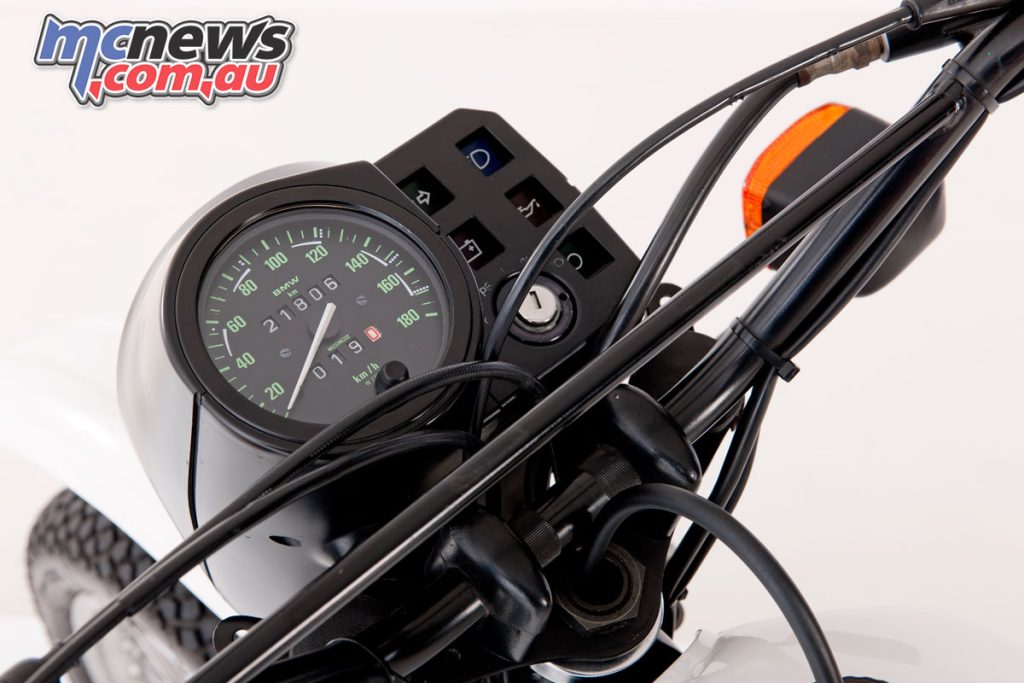
Responding to the G/S’s success in the Paris-Dakar rallies; a special Paris-Dakar version of the R80 G/S became available during 1984. While the engine and chassis were unchanged, setting the Paris-Dakar apart was a large, 32 litre, steel fuel tank complete with Paris-Dakar rally winner Gaston Rahier’s signature. Also featured were red and blue Motorsport decals, foam kneepads, and enough fuel capacity to allow for 300 miles between stops.
The R80 G/S was a brilliantly conceived motorcycle and its timing was perfect. Buoyed by the success in the Paris-Dakar rally, production numbered 21,864 through 1987. With the R80 G/S BMW found a unique formula, one that suited many adventure riders around the world.
Although the replacement Paralever R100GS was also hugely popular, the lighter and smaller R80 G/S set the scene. It is now considered the classic BMW Gelände Strasse motorcycle and as such commands special collector status.























